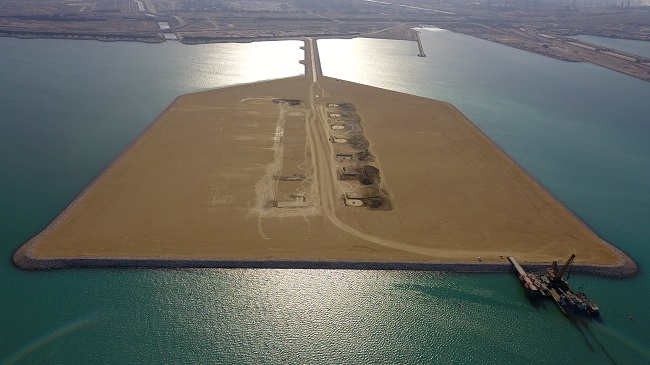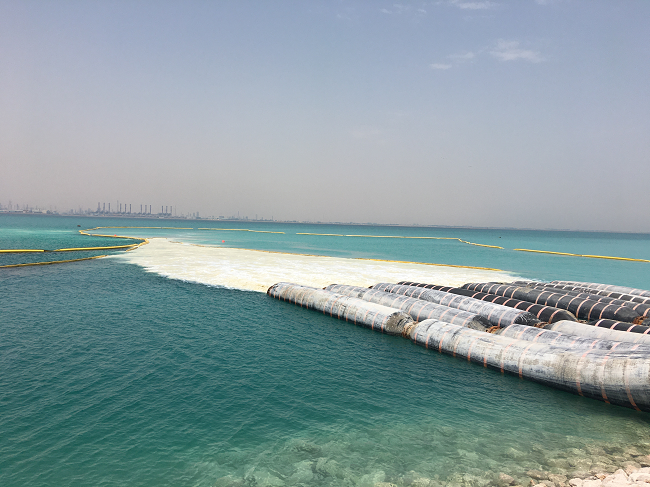Six-kilometer ‘underwater Great Wall’ protects coral habitats


The Saudi Arabian Berri Artificial Island project
"The water is very clear, and you can see many fish species. It feels like entering an underwater world." Every technician working on the construction site of the North Island of the Saudi Arabian Berri Artificial Island project is impressed by the beautiful environment here.
The Saudi Arabian Berri Artificial Island project is located in the Jubail Industrial City of Saudi Arabia. The overall project consists of two artificial islands, connected causeways and bridges, emergency escape docks, and the removal of abandoned pipelines and other related facilities. It was undertaken by the China Harbour Engineering Company, with the participation of the China Communications Construction Company (CCCC). throughout the construction process.
Before the start of construction, the project team commissioned an environmental impact analysis report from the King Fahd University of Petroleum and Minerals-KFUPM to assess the impact of construction, which covered various aspects such as seawater quality, marine life, air quality and noise, waste management, and sewage discharge.
Based on this report, the project team decided to adopt a high-cost and more complex bridge design, which would enable dynamic circulation in nearby waters, in a bid to reduce water pollution. Additionally, the combination of the bridge and the two artificial islands could act as artificial coral reefs, helping to increase local biodiversity.
However, challenges emerged during the construction process: the use of giant dredging vessels would cause the surrounding water to become turbid, and the sediment could accumulate on the seabed, which would have a negative impact on the habitat of corals and fish.

The "underwater Great Wall" - anti fouling curtain
To protect the sea environment, Chinese engineers used a series of floating objects resembling fishing nets and extending from the coastline, forming the "underwater Great Wall" - anti fouling curtain. The pollution prevention curtain is composed of geotextile fabric, floats, and anchors, with a total length of 6 kilometers. The geotextile fabric extends 6 meters from the water's surface down to the seabed, forming a massive barrier that prevents the spread of turbid water. This high-density non-woven geotextile fabric has high strength and stability, effectively blocking sediment and suspended materials, and achieving a pollution prevention rate of up to 90 percent. In addition, water could still flow freely on both sides of the curtain, which helps maintain the dynamic balance of the aquatic ecosystem.
When senior diver Saleh led a team to collect water samples for testing, he said, "Chinese companies are very concerned about environmental protection. From what I can see with my eyes, the environment here has hardly been affected. The underwater footage captured will serve as a reference for the environmental impact assessment report. The goal of 'no affect on turtle nesting and seagrass growth' proposed by Chinese companies has left a deep impression on me."











.png)
.png)
.png)





